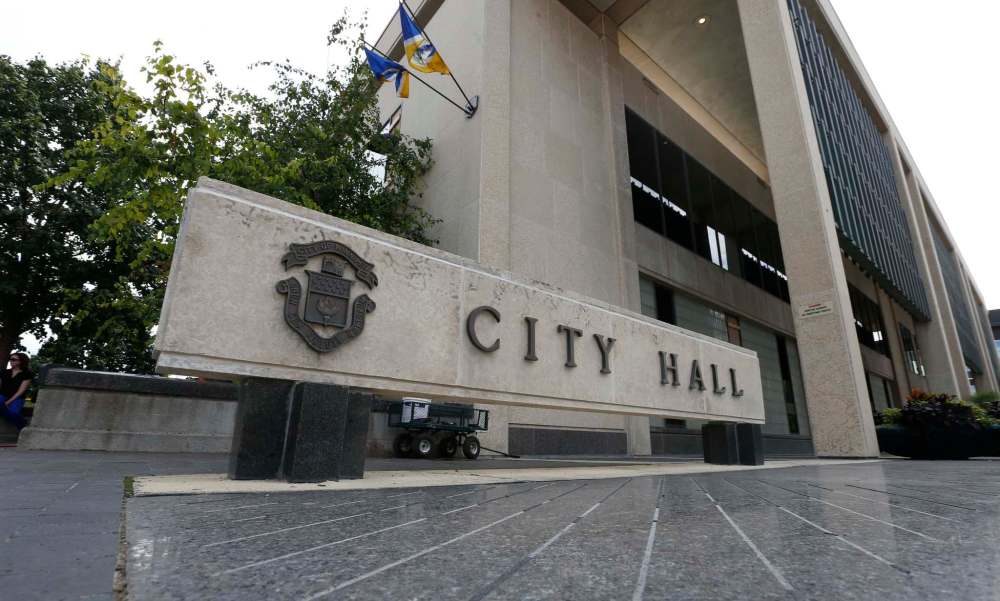Councillors push to revive wastewater phosphorus-removal proposal
Advertisement
Read this article for free:
or
Already have an account? Log in here »
To continue reading, please subscribe:
Monthly Digital Subscription
$1 per week for 24 weeks*
- Enjoy unlimited reading on winnipegfreepress.com
- Read the E-Edition, our digital replica newspaper
- Access News Break, our award-winning app
- Play interactive puzzles
*Billed as $4.00 plus GST every four weeks. After 24 weeks, price increases to the regular rate of $19.00 plus GST every four weeks. Offer available to new and qualified returning subscribers only. Cancel any time.
Monthly Digital Subscription
$4.75/week*
- Enjoy unlimited reading on winnipegfreepress.com
- Read the E-Edition, our digital replica newspaper
- Access News Break, our award-winning app
- Play interactive puzzles
*Billed as $19 plus GST every four weeks. Cancel any time.
To continue reading, please subscribe:
Add Free Press access to your Brandon Sun subscription for only an additional
$1 for the first 4 weeks*
*Your next subscription payment will increase by $1.00 and you will be charged $16.99 plus GST for four weeks. After four weeks, your payment will increase to $23.99 plus GST every four weeks.
Read unlimited articles for free today:
or
Already have an account? Log in here »
Hey there, time traveller!
This article was published 23/09/2019 (2220 days ago), so information in it may no longer be current.
The City of Winnipeg ignored a consultant’s report supporting phosphorus-removal plans that could be implemented right away, instead asking the province for more time to clean up its wastewater.
Now, three councillors are demanding city hall reverse course and immediately implement a cost-effective phosphorus-removal plan championed by the International Institute for Sustainable Development and Lake Winnipeg Foundation.
Couns. Kevin Klein, Shawn Nason and Jason Schreyer plan to get a motion heard at council’s Thursday meeting to implement the temporary fix.

“If we don’t enact something now and show leadership on this, it makes the entire concept of ‘one million trees’ and everything else we do hypocritical,” Klein said, referencing a recent pledge from Mayor Brian Bowman to plan trees to match Winnipeg’s growing population. “We’ve turned a blind eye.”
The province has ordered the city to reduce its phosphorus load into Lake Winnipeg to one milligram per litre from 3.54 mg/L of water.
Earlier this year, the city hired consultant AECOM to examine eight temporary solutions. Its report says a few temporary fixes merit further study — among them, the IISD plan, which proposes adding ferric chloride to treatment facilities to bind to and remove phosphorus.
City officials included the AECOM report in a submission to Manitoba Sustainable Development on July 31, but wrote no temporary solutions are available other than a deadline extension past December 2021.
A city spokesperson declined comment Monday.
Klein is a member of council’s water and waste committee, and said he wasn’t provided a copy of the AECOM report ahead of the meeting where it was discussed. When Klein read it himself, he determined to bring the full report to council.
“If I would have seen this report, the question could have come out — why is the consultant saying this is resolvable, we could fix this today?” Klein said. “That is the million-dollar question.”
Of the eight proposed solutions, only the IISD plan is thought to get phosphorus below one mg/L.
“It’s doable, it’s technically feasible, it’s cost-effective and it will take care of our most urgent problem, even as upgrades continue,” said Dimple Roy, director of water management for IISD.
Also Thursday, council will hear a report from the city’s auditor on the $1-billion estimate for permanent upgrades to clean-up Winnipeg’s downstream waste. That figure does not include future improvements to nutrient removal facilities.
“We’ve got a motion coming forward for hundreds of millions of dollars to upgrade the plant, whereas this is an interim solution that can address some of that,” said Nason.
To compare, the IISD plan would cost $3 million in capital expenses and $2 million in annual expenses, and could be implemented within six to 18 months.
Since the city already uses ferric chloride, albeit in a slightly different way, operations and costs would be minimally affected, AECOM found. One downside is the plan would increase the amount of sludge waste the city has to be dealt with.
Roy said since the city rejected the plan in March, people continued to hear support for it.
“There has been a higher level of interest, very broadly, based on the algal blooms we saw this year. We’ve seen quite a bit of interest from people out on cottages at Lake Winnipeg. I think city councillors have been hearing the message, not just from us and our partners but also from people more broadly,” Roy said. “It’s nice to hear that some people want to take action.”
Decades of research at the IISD’s Environmental Lakes Area shows reducing Lake Winnipeg’s phosphorus load is the best way to help save the lake, Roy said.
“We’re putting a motion forward to say, look, you’re killing the lake — you can’t wait two years, or I think the plan by the time they get to the phosphorus is 10 years,” Klein said. “We can fix this today.”
tvanderhart@freepress.mb.ca
Twitter: @tessavanderhart

